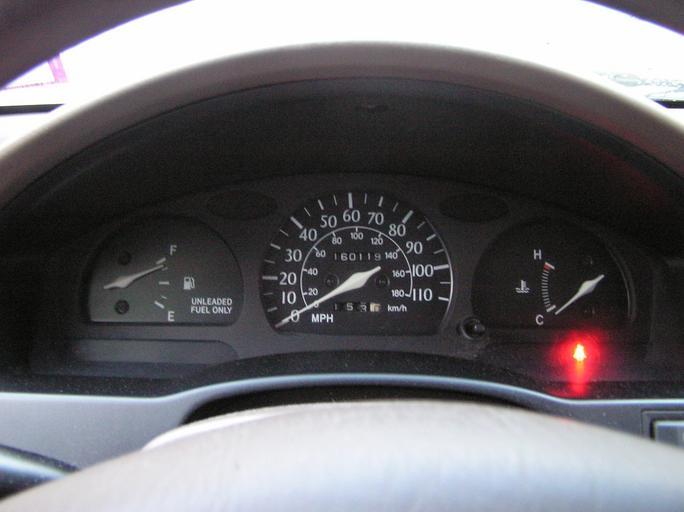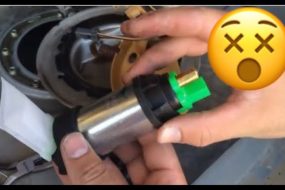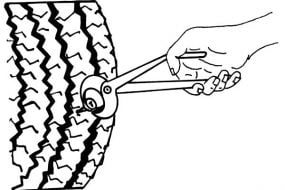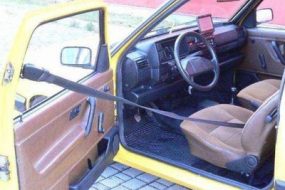
The fuel gauge can sometimes go bad. When this happens, it will either read an incorrect fuel gauge or not read at all. In this case, you may need to have it fixed or replaced. So, how do you reset the fuel gauge after fixing or replacing it? Will disconnecting the battery reset the fuel gauge?
No, disconnecting the battery will not reset the fuel gauge because the fuel gauge is part of the instrument cluster and not directly affected by disconnecting the battery. However, disconnecting the battery will reset the fuel gauge range estimated data on your speedometer.
Will Disconnecting the Battery Reset the Fuel Gauge?
Since the fuel gauge is part of the instrument cluster and is usually not directly affected by disconnecting the battery, disconnecting the battery will not reset the fuel gauge rather, it will reset the fuel gauge readings (data) on your speedometer.
Disconnecting the battery will only reset the fuel gauge range estimated data on your speedometer. Meaning that you will lose the fuel range estimated data.
For example, if you are getting 30MPG before the battery is disconnected, after reconnecting the battery, the estimated range will be 0.0MPG. You will need to drive for a while for the range estimated data to start reading to give you fresh MPG.
Therefore, if your fuel gauge is bad, disconnecting the battery will not fix it. You will have to fix whatever issue the fuel gauge has before the problem is solved. And when the problem is fixed, you don’t need to disconnect the battery to make it work. It should start working immediately.
I’ve had my fuel gauge not reading at all when I was using my Lexus IS300. I had just replaced the fuel filter and after installing the fuel system back to the gas tank, I noticed that the fuel gauge was not reading.
It happened that the installation was not properly done and the guage instrument was not properly attached to the fuel system. I had to redo the process again to make it work. I didn’t disconnect the battery for it to work. It worked immediately the installation was perfected.
Therefore, you don’t need to disconnect the battery to make your fuel gauge work. Fix the problem the gauge has and it should work immediately.
This is because the fuel gauge operates based on a sending unit in the fuel tank that measures the level of fuel and sends a signal to the gauge on your dashboard. It’s not a function of the battery or its power source.
If you’re experiencing issues with your fuel gauge, such as inaccurate readings, it’s more likely related to a problem with the sending unit, the gauge itself, or related electrical components. Disconnecting the battery won’t fix these issues.
How to Reset Fuel Gauge

The best way to reset the fuel gauge is by recalibrating the gauge to provide accurate readings. However, in many modern vehicles, you cannot manually recalibrate or reset the fuel gauge without specialized tools and diagnostic equipment.
You should first determine whether the gauge is reading inaccurately due to a problem with the sending unit, wiring, or other components. If there’s an underlying issue, such as a malfunctioning sending unit or electrical problem, that issue should be addressed first.
If the issues are addressed and the fuel gauge is still not reading accurately, you can recalibrate it with specialized diagnostic equipment to provide accurate readings.
You can also disconnect the vehicle’s battery for a short period (15 – 30 minutes) to reset the instrument cluster, which includes the fuel gauge estimated range. However, this should be done with caution, and it may not resolve the issue with the fuel gauge.
Why Does My Fuel Gauge Read Full When the Tank is Empty?
The reasons why your fuel gauge reads full when the tank is actually empty or nearly empty is because of a faulty fuel-sending unit, Wiring issues or electrical problems, gauge cluster problems, inaccurate calibration, etc.
Faulty Fuel Sending Unit
The fuel gauge operates with the help of a sending unit in the gas tank. This sending unit has a float that moves with the fuel level and sends an electrical signal to the gauge.
If the sending unit is malfunctioning, it may not accurately report the fuel level, causing the gauge to read full when the tank is empty.
Wiring or Electrical Problems
Wiring issues or electrical problems in the circuit that connects the sending unit to the fuel gauge can lead to inaccurate readings. Damaged or corroded wires, loose connections, or blown fuses can disrupt the signal between the sending unit and the gauge.
Gauge Cluster Problems
The fuel gauge is a part of the instrument cluster on your vehicle’s dashboard. If there is a problem with the gauge itself or the circuitry within the cluster, it can result in inaccurate readings.
I have this issue too with the speedometer on my Peugeot 307SW 2005. The speedometer was still in good shape but the circuitry within the cluster has gone bad. I had to replace the speedometer. The Peugeot 307 SW was my first car.
Inaccurate Calibration
Sometimes, the fuel gauge may need to be recalibrated. This can happen if, for example, the sending unit was replaced or the gauge cluster was serviced.
Mechanical Issues in the Fuel Tank
In rare cases, mechanical problems in the fuel tank, such as a stuck or malfunctioning float, can lead to inaccurate fuel level readings. To resolve this issue, you may need to open the gas tank to access the gauge after which you should get it fixed.
Conclusion
Disconnecting the battery will not reset your fuel gauge if the problem with the fuel gauge is not fixed. However, disconnecting the battery can only reset the fuel gauge’s estimated range MPG on your speedometer. If your fuel gauge has an issue, you will need to address this issue, as inaccurate fuel gauge readings can lead to running out of fuel unexpectedly.









